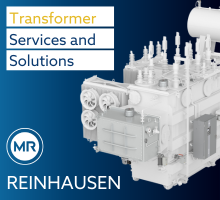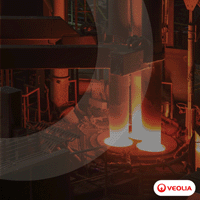Sumitomo Wins Technical Development Awards from Japan Institute of Metals
09/18/2009 - Sumitomo Metal Group companies receive three awards from the Japan Institute of Metals as part of the 32nd Technical Development Awards.
Sumitomo Metal Industries, Ltd., Sumitomo Metals (Naoetsu), Ltd., and Sumitomo Metals (Kokura), Ltd. received three awards from the Japan Institute of Metals as part of the 32nd Technical Development Awards.
The Technical Development Awards, which the Institute presents to engineers engaged in the development of original technologies, were presented to Sumitomo Metals Group Companies for the following technologies:
- "Development of new continuous casting technologies for very thick plate (PCCS method)" by Sumitomo Metals
- "Development of stainless steel foils for bipolar plates of polymer electrolyte fuel cells" by Sumitomo Metals and Naoetsu
- "Development of a new class of steel requiring no normalizing heat treatment before nitrocarburization for the application of high strength nitrocarburized crankshafts" by Sumitomo Metals and Kokura. This award was received jointly with Honda R&D Co., Ltd.
"Development of new continuous casting technologies for very thick plate (PCCS*2)" by Sumitomo Metals — Although continuous casting is widely used for the manufacture of slabs and steel plates, porosities can occur in the slab’s center during the solidification of high-quality steel plates such as high-carbon steel plates for dies and for large-scale industrial machinery. Because centerline porosity detrimentally affects quality, high quality steel plates have typically been produced by slabbing of a large-sized ingot before rolling.
Sumitomo Metals' PCCS method reduces centerline porosities through hard reduction of the slab with a roll pair in the final solidification stage. This innovative technology facilitates the manufacture of very thick plates with thicknesses in excess of 100 mm. Sumitomo Metals is already using these continuous casting technologies in the No.2 continuous caster at the company’s Kashima Steel Works.
The new technology facilitates the efficient manufacture of very thick plates with a short lead time using a conventional continuous casting machines and a rolling mill. Using continuous casting instead of slabbing an ingot has also allowed the company to reduce CO2 emission by approximately 110 Kg per unit ton of crude steel.
"Development of stainless steel foils for bipolar plates of polymer electrolyte fuel cells*4" by Sumitomo Metals and Naoetsu — Fuel cells are expected to be the next-generation, eco-friendly, highly-efficient electrical power supply source, for practical application in automobiles and other diverse fields. This technology employs a bipolar plate (also called a separator), which combines the functions of a flow-field for fuel gas and cooling water and a conductor of generated electricity. Separators, which are used extensively for fuel cells, need to display stable performance and quality, excellent mass-production capability, and a low unit cost.
Sumitomo Metals and Naoetsu developed stainless steel foils for bipolar plates that are suitable for mass production and can be formed with ease. Although the stainless steel develops a passive-state surface that offers superior corrosion resistance, its extremely low electrical conductivity makes it unacceptable for bipolar plates. Sumitomo Metals and Naoetsu subsequently developed a method to significantly lower the electrical surface contact resistivity of the plate surface by making electrically conductive metallic inclusions, widely dispersed in the steel, that protrude on the passive-state surface.
Contrary to the previous expensive method of lowering resistance by gold plating, this development has enabled the low-cost production of bipolar plates.
Part of the technological development for mass production of this technology was jointly achieved with the New Energy and Industrial Technology Development Organization (NEDO).
"Development of a new class of steel requiring no normalizing heat treatment before nitrocarburization*6 for the application of high strength nitrocarburized crankshafts" by Sumitomo Metals and Kokura — Higher-strength crankshafts are needed for high-powered and light-weight engines. Such crankshafts should be capable of being produced by a cost-effective manufacturing process with reduced CO2 emissions. Traditionally, nitrocarburized crankshafts used for high-powered engines have required heat treatment processes, such as normalizing, prior to the nitrocarburization process, as heat forging causes crystal grains to become coarse and friable.
Sumitomo Metals and Kokura developed a material that performs equal or superior to normalized heat-treated steel, without heat treatment. The newly developed materials achieves this superior performance through the addition of titanium, nitrogen, and molybdenum, which helps to enable finer crystal grains thus facilitating structural refinement after forging the material.
The production process for crankshafts made of this steel reduces CO2 emissions by about 22% and costs by about 8%. It has been commercially applied to some passenger cars since 2006.
The Sumitomo Metals Group noted that it will continue invest in technology development and research for practical applications, while aiming to "accelerate distinctiveness" by supplying environmentally-friendly products.
Sumitomo Metals' PCCS method reduces centerline porosities through hard reduction of the slab with a roll pair in the final solidification stage. This innovative technology facilitates the manufacture of very thick plates with thicknesses in excess of 100 mm. Sumitomo Metals is already using these continuous casting technologies in the No.2 continuous caster at the company’s Kashima Steel Works.
The new technology facilitates the efficient manufacture of very thick plates with a short lead time using a conventional continuous casting machines and a rolling mill. Using continuous casting instead of slabbing an ingot has also allowed the company to reduce CO2 emission by approximately 110 Kg per unit ton of crude steel.
"Development of stainless steel foils for bipolar plates of polymer electrolyte fuel cells*4" by Sumitomo Metals and Naoetsu — Fuel cells are expected to be the next-generation, eco-friendly, highly-efficient electrical power supply source, for practical application in automobiles and other diverse fields. This technology employs a bipolar plate (also called a separator), which combines the functions of a flow-field for fuel gas and cooling water and a conductor of generated electricity. Separators, which are used extensively for fuel cells, need to display stable performance and quality, excellent mass-production capability, and a low unit cost.
Sumitomo Metals and Naoetsu developed stainless steel foils for bipolar plates that are suitable for mass production and can be formed with ease. Although the stainless steel develops a passive-state surface that offers superior corrosion resistance, its extremely low electrical conductivity makes it unacceptable for bipolar plates. Sumitomo Metals and Naoetsu subsequently developed a method to significantly lower the electrical surface contact resistivity of the plate surface by making electrically conductive metallic inclusions, widely dispersed in the steel, that protrude on the passive-state surface.
Contrary to the previous expensive method of lowering resistance by gold plating, this development has enabled the low-cost production of bipolar plates.
Part of the technological development for mass production of this technology was jointly achieved with the New Energy and Industrial Technology Development Organization (NEDO).
"Development of a new class of steel requiring no normalizing heat treatment before nitrocarburization*6 for the application of high strength nitrocarburized crankshafts" by Sumitomo Metals and Kokura — Higher-strength crankshafts are needed for high-powered and light-weight engines. Such crankshafts should be capable of being produced by a cost-effective manufacturing process with reduced CO2 emissions. Traditionally, nitrocarburized crankshafts used for high-powered engines have required heat treatment processes, such as normalizing, prior to the nitrocarburization process, as heat forging causes crystal grains to become coarse and friable.
Sumitomo Metals and Kokura developed a material that performs equal or superior to normalized heat-treated steel, without heat treatment. The newly developed materials achieves this superior performance through the addition of titanium, nitrogen, and molybdenum, which helps to enable finer crystal grains thus facilitating structural refinement after forging the material.
The production process for crankshafts made of this steel reduces CO2 emissions by about 22% and costs by about 8%. It has been commercially applied to some passenger cars since 2006.
The Sumitomo Metals Group noted that it will continue invest in technology development and research for practical applications, while aiming to "accelerate distinctiveness" by supplying environmentally-friendly products.



.png?lang=en-US&ext=.png)






